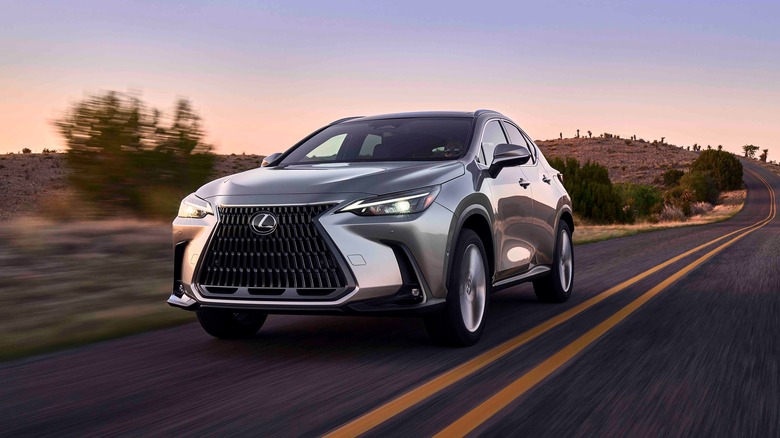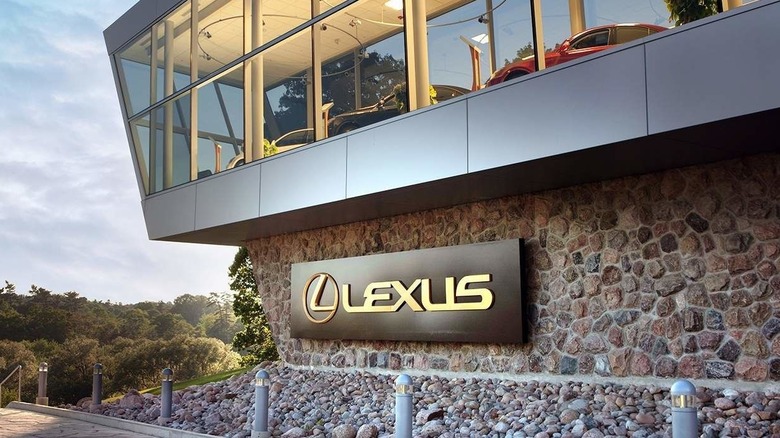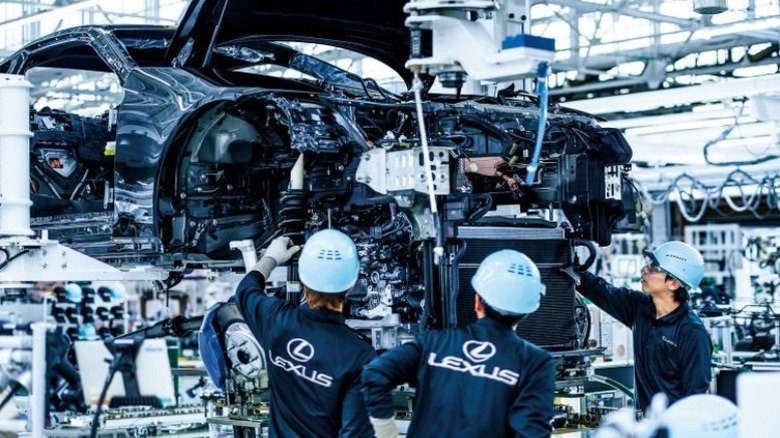Who Builds Lexus Cars And Where Are They Made Today?
Many popular car brands like Toyota, Ford, and Chevrolet were founded in the early 20th century. Lexus, on the other hand, is relatively new to the market — it wasn't until 1989 when the brand was launched. Even though it was pretty late to the game, Lexus cars have made a strong impression among the masses. They're widely recognized for their elegant and bold exterior, fantastic build quality, and excellent value for money.
In fact, some Lexus models won awards both in the United States and in Europe. The 2021 LC 500 was named the Luxury Vehicle of Texas at the 2021 Texas Auto Roundup. At the 2024 Scottish Car of the Year Awards, the LBX was awarded the Small Crossover/SUV of the Year. Lexus itself won the Autotrader Drivers' Choice Awards in the UK as the Most Reliable Brand for the fourth time.
A look at the history of Lexus reveals that the company was originally a concept by Toyota, one of the most reliable carmakers in the world. This remains true today, with Lexus cars even made in some Toyota factories both in Japan and abroad.
The maker of Lexus cars
Lexus cars have been built by the Toyota Motor Corporation ever since planning first began in 1983. That year, Toyota's new president and CEO Yukiyasu Togo wanted the company to roll out a line of luxury cars. They were losing that market to the German car producers, despite their already established reputation abroad. So, in an effort to satisfy this demand, Togo sold the idea of a Toyota-made luxury car to the company's board members. Toyota's chairman Dr. Eiji Toyoda then led the secret Circle F Project that eventually became Lexus.
It took Toyota four years, around 4,000 workers, 400 prototypes, and 2.7 million test miles to come up with the final design of the first of the many successful Lexus cars, the LS 400. This was sent out for manufacture at Toyota's plant in Tahara, Japan. Originally, the LS 400 was supposed to carry the Toyota nameplate. But after much consideration, the company realized that it really wouldn't fit into Toyota's people's car image. Thus, the brand Lexus was created.
The original LS 400 finally debuted in the 1989 Detroit Auto Show, and officially launched a few months later. Just four months after the global launch, 16,000 units had been sold in the US alone. By 1991, Lexus managed to overthrow both Mercedes-Benz and BMW as the leading luxury import brand in the country, and come 1998, it was outselling even domestic brands like Lincoln and Cadillac. Today, Lexus remains part of the Toyota Motor Corporation and is distributed in at least 90 countries.
The manufacturing footprint of Lexus
In 35 years since its foundation, Lexus has grown big enough to require multiple manufacturing plants in different countries. Interestingly, the majority of these facilities are in Japan where the brand was initially created. One of the company's biggest and oldest Japan-based plants is located in Tahara, Aichi, Japan. Covering 43 million square feet, the site that rolled out Lexus' first car now focuses on several modern models, such as the GX, IS, LS, NX, and the RC. Another factory in Aichi, Japan is the Motomachi location. It has an all-white production floor spanning over 17 million square feet, and an on-site track for test driving the LC, LC Hybrid, and RZ.
Also in Japan is the 19-million-square-foot Kyushu, Fukuoka facility. It only started operating in 1991, but now handles a host of processes, including casting, body construction, and final assembly. It's in the Kyushu plant that eight Lexus models, like ES Hybrid and NX, come to life. The last Lexus production site in Japan is in Yoshiwara, which is actually a Toyota Auto Body factory. Established in 1962, the Yoshiwara location engineers the LX and LX Hybrid models, on top of some Toyota cars like the Coaster and Land Cruiser 70 and 200.
Outside Japan, there are three Toyota Motor Manufacturing facilities that handle Lexus cars. Toyota Motor Manufacturing Indiana (TMMI) on a 1,160-acre land in Princeton, Indiana stamps, paints, welds, and assembles the TX models for Lexus. Meanwhile, Toyota Motor Manufacturing Kentucky (TMMK) is a nine-million-square-feet factory in Lexington, Kentucky, responsible for just two models, the 2025 Lexus ES and the ES Hybrid. There's also a Toyota Motor Manufacturing plant in Ontario, Canada, where the NX and RX are produced.


